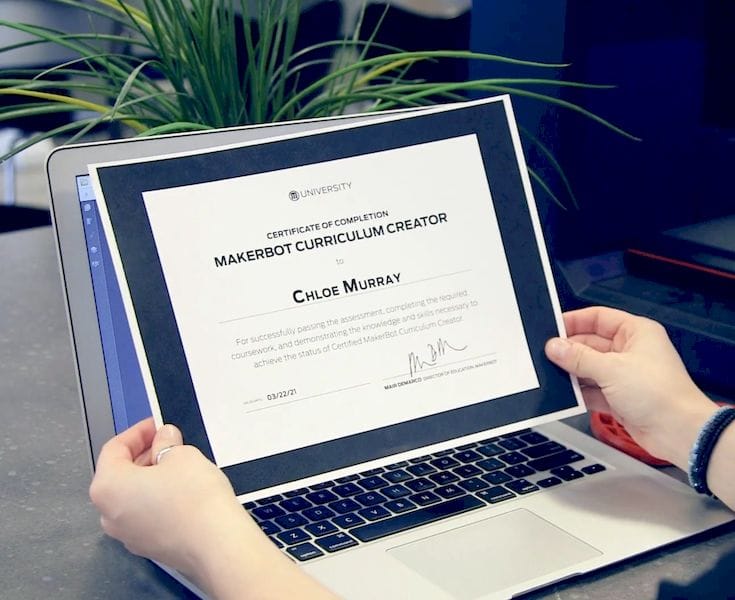
MakerBot’s gradual transformation continues.
This fascinating company, one that almost singlehandedly opened up the world of 3D printing to the public in 2009, has undergone more changes than one could possibly have imagined when it was launched nine years ago.
The company’s first iteration was all about makers: those DIY folks who were able to gain incredible capabilities on their desktop. MakerBot succeeded wildly, becoming the largest 3D printer manufacturer in the process.
But their success and the publicity surrounding the “new” desktop 3D printing technology generated many competitors that put pressure on the company.
In the midst of this boom, the owners of MakerBot smartly sold the company to traditional 3D printing giant Stratasys at a very high price. But when Stratasys took over, they spent the best part of two years remaking MakerBot into a more well organized operation capable of scaling up business.
But in that interim, the rest of the industry caught up and in some ways passed by MakerBot through innovative products, effective pricing, unusual services, new materials and many other aspects. MakerBot’s temporary distraction with reorganization had cost them part of their industry lead.
In that period most desktop 3D printer companies realized there was only a limited future if addressing the DIY market, which at that point was saturated with options – and continues to be so today.
Instead the smarter companies began to focus on specific application areas, which up previously had been loath to adopt 3D printing technologies because of lack of understanding and awkward methods of using the equipment within existing business processes. The key was to adapt 3D printing products to fit within these vertical business markets to make it easy and sensible for purchases to occur.
When MakerBot resurfaced, this is the world they found themselves within: one where success in 3D printing business requires a focus on particular markets.
What market would MakerBot focus on? I get the sense that they explored several areas, including simple prototyping in workshops, but the area they seem to have mostly landed on today is that of education.
Most of their recent announcements seem to address that market, including their most recent announcement of a certification program for educators. This is a very good idea, as it ensures a consistent level of knowledge among educators and at the same time provides MakerBot’s support folks with a standard expectation of knowledge for their educational clients. It’s all about making life easy for the education market.
But there’s another interesting angle here: many educators are required to keep up their knowledge by continuing to learn through what’s called “professional development”. “PD” time is often selected by the individual educator, and MakerBot has created a means for those educators interested in 3D printing to not only learn about the tech, but gain “PD” points for doing so.
This should dramatically increase the number of educators engaged with MakerBot, as I don’t believe there are many other “certifiable” programs for educators. With currently 7,000 institutions working with MakerBot, this should catch on quickly.
It seems clear to me that MakerBot’s future, as observed through these moves, is as a provider to the education market, and not to other markets that seem to now be dominated by other parties. The transition is almost complete.
Via MakerBot and BusinessWire

